How to Unlock a Bathroom Door
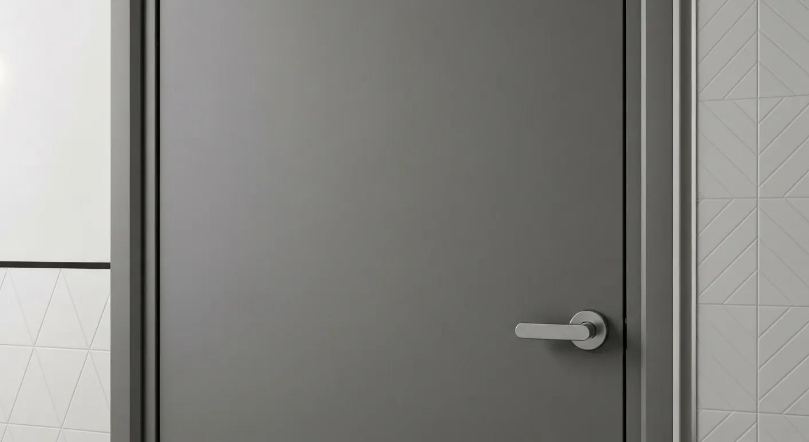
Getting locked out of your bathroom is one of those frustrating moments that always seems to happen at the worst possible time. Whether it's a curious toddler who's managed to lock themselves in or you've accidentally pushed the button on your way out, knowing how to handle the situation can save you a lot of stress. This guide walks you through everything you need to know about unlocking bathroom doors, from understanding how different locks work to knowing when it's time to call in the professionals at Lostkey Locksmith.
What Are the Common Types of Bathroom Door Locks and How Do They Work?
Most bathroom doors use pretty simple locking mechanisms because they're designed for privacy rather than security. You'll typically find one of a few common types in Australian homes.
The following list outlines primary bathroom lock types and their key features:
- Privacy knob locks are probably what you're most familiar with. They've got a little button on the inside that you push to lock the door, and there's usually a small hole on the outside for emergency access. The mechanism inside is fairly straightforward, with a spring latch that clicks into place when you turn or push the lock.
- Twist and turn privacy locks work similarly but use a small knob or tab that you rotate instead of pushing. These often have the same emergency access hole on the outside, which makes them relatively easy to unlock if you know what you're doing.
- Lever handle locks with thumbturns are becoming more popular, especially in newer homes. The inside handle has a little twist knob that engages the lock, whilst the outside handle stays functional for opening once unlocked.
- Thumbturn locks are the simplest of the lot. You just rotate the entire knob to lock or unlock the door. Some older Australian homes still have these, and they're generally pretty reliable.
Understanding which type you've got helps you figure out the best way to unlock it without causing any damage.
What Are the Step-by-Step DIY Methods to Unlock a Bathroom Door Without a Key?
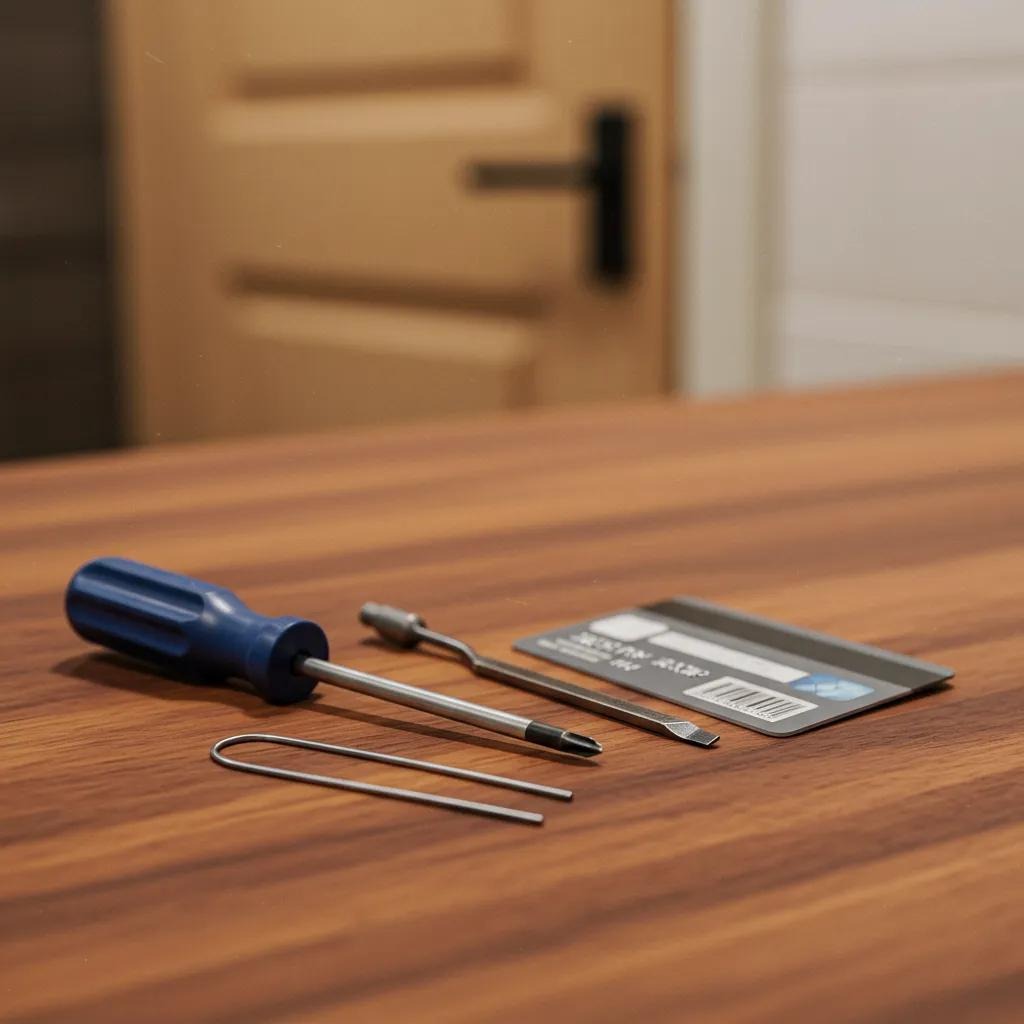
Before you reach for the phone, there are several things you can try with items you've probably got lying around the house. These methods work surprisingly well for most bathroom lockouts.
Below is a quick-reference table of tools, compatible lock types, and recommended usage:
- The Screwdriver Method: If your lock has that little hole on the outside (and most do), grab a small flathead screwdriver from your toolkit. Insert it straight into the hole and apply gentle inward pressure whilst giving it a slight twist. You should feel the mechanism give way, and the lock will pop open. This works brilliantly for most privacy knob locks.
- The Paperclip or Bobby Pin Trick: Don't have a screwdriver handy? A straightened paperclip or bobby pin does the job just as well. Push it into the emergency release hole until you feel resistance, then press firmly. The internal mechanism will release, and you'll hear a satisfying click as the door unlocks. This technique is particularly good for push button style locks.
- The Credit Card Shimming Method: This one's a classic for a reason. If you've got an older door with a spring latch (the angled bolt that clicks when you close the door), you can often bypass it with a flexible plastic card. Slide the card between the door and the frame where the latch sits, then bend it back towards the frame whilst wiggling the door handle. The card pushes the latch back, and the door swings open. Just use an old loyalty card or expired card rather than your actual credit card. You don't want to damage something important, and the technique can be a bit rough on the card itself.
- The Butter Knife Approach: Similar to the card method, a butter knife can work wonders on spring latches. Slide the flat edge between the door and frame, angling it to catch the latch bolt. Apply gentle pressure to push the latch back whilst turning the handle. Be careful not to use too much force or you might damage the door frame.
Quick Reference Guide
Here's a handy breakdown of what works best for different situations:
- For pinhole privacy knobs: Small flathead screwdriver inserted and twisted gently
- For push button locks: Straightened paperclip pushed firmly into the emergency hole
- For spring latch doors: Flexible plastic card slid between door and frame
- For standard latch bolts: Butter knife used carefully to disengage the spring
The key with all these methods is patience. If you're forcing things or hearing grinding noises, stop and reassess. You don't want to turn a simple lockout into a broken lock that needs replacing
When Should You Call Lostkey Locksmith for Professional Bathroom Door Unlocking?
Sometimes DIY just isn't the answer, and that's perfectly okay. Knowing when to call in professional help can actually save you money in the long run by preventing damage to your door or lock.
If you've tried the methods above and nothing's working, there's probably something more serious going on with the lock mechanism. Maybe the internal components are worn, the latch is misaligned, or the lock cylinder has stripped. A professional locksmith has specialised tools and expertise to handle these situations without destroying your door.
Emergency situations definitely warrant an immediate call to Lostkey Locksmith. If a young child or pet is locked inside the bathroom, you need someone who can get the door open quickly and safely. Professional locksmiths have protocols for these urgent scenarios and can respond rapidly with the right non destructive entry techniques.
Signs that you should pick up the phone include:
- The lock cylinder won't turn at all, even when you're sure you're using the right technique
- You've tried multiple DIY methods and the latch still won't budge
- There's a child, elderly person, or pet trapped inside who might be in distress
- The lock mechanism is making grinding or crunching sounds
- You can see visible corrosion or rust on the lock components
- The entire knob feels loose or wobbly, suggesting the internal mounting has failed
Prompt recognition of these conditions ensures homeowners avoid prolonged downtime and door damage, guiding them toward proactive lockout prevention strategies next.
How Can You Prevent Future Bathroom Door Lockouts and Maintain Your Locks?
Regular maintenance enhances latch operation and reduces the likelihood of accidental lockouts by preserving internal components and alignment. Cleaning the lock assembly with a dry cloth, applying a silicone-based lubricant, and verifying spindle alignment keep the mechanism smooth. Choosing privacy hardware with an accessible emergency release hole and robust internal components streamlines future access. Childproofing measures such as spring-loaded thumbturns and outer-handle covers deter unintended locking without compromising safety.
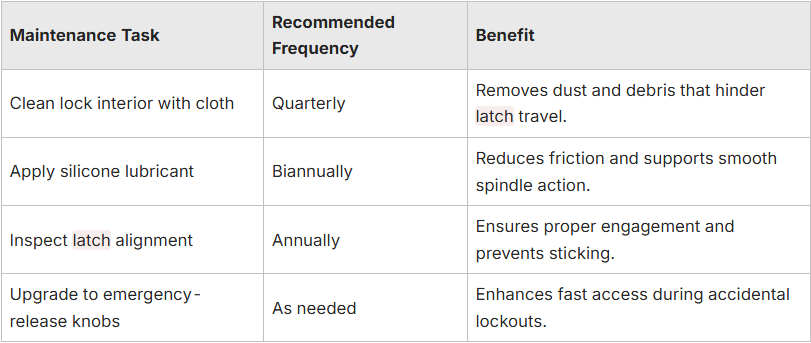
Adopting these maintenance steps fosters reliable lock performance and lays the groundwork for informed hardware selection in diverse home environments.
What Are the Most Frequently Asked Questions About Unlocking Bathroom Doors?
Homeowners often ask how to unlock a bathroom door using a small hole or credit card, and what tools work best. A small screwdriver or emergency key unlocks pinhole privacy locks by pressing the internal release pin, while a credit card or shim inserted between door and frame retracts spring latches on older doors. Bobby pins and paperclips excel at pushing access detents in push-button knobs. When these techniques fail or risk damage, calling Lostkey Locksmith ensures safe entry with minimal hardware impact.
- Equip a flathead screwdriver for fast release through the knob’s pinhole.
- Use a sturdy plastic card to disengage spring-loaded latch bolts.
- Straighten a paperclip to reach the emergency release within push-button locks.
- Rely on professional locksmith tools when home methods compromise door integrity.
By understanding these common questions and answers, readers can quickly determine whether DIY techniques suffice or whether to contact Lostkey Locksmith’s emergency lockout service.
What Are the Signs That Your Bathroom Door Lock Needs Repair or Replacement?
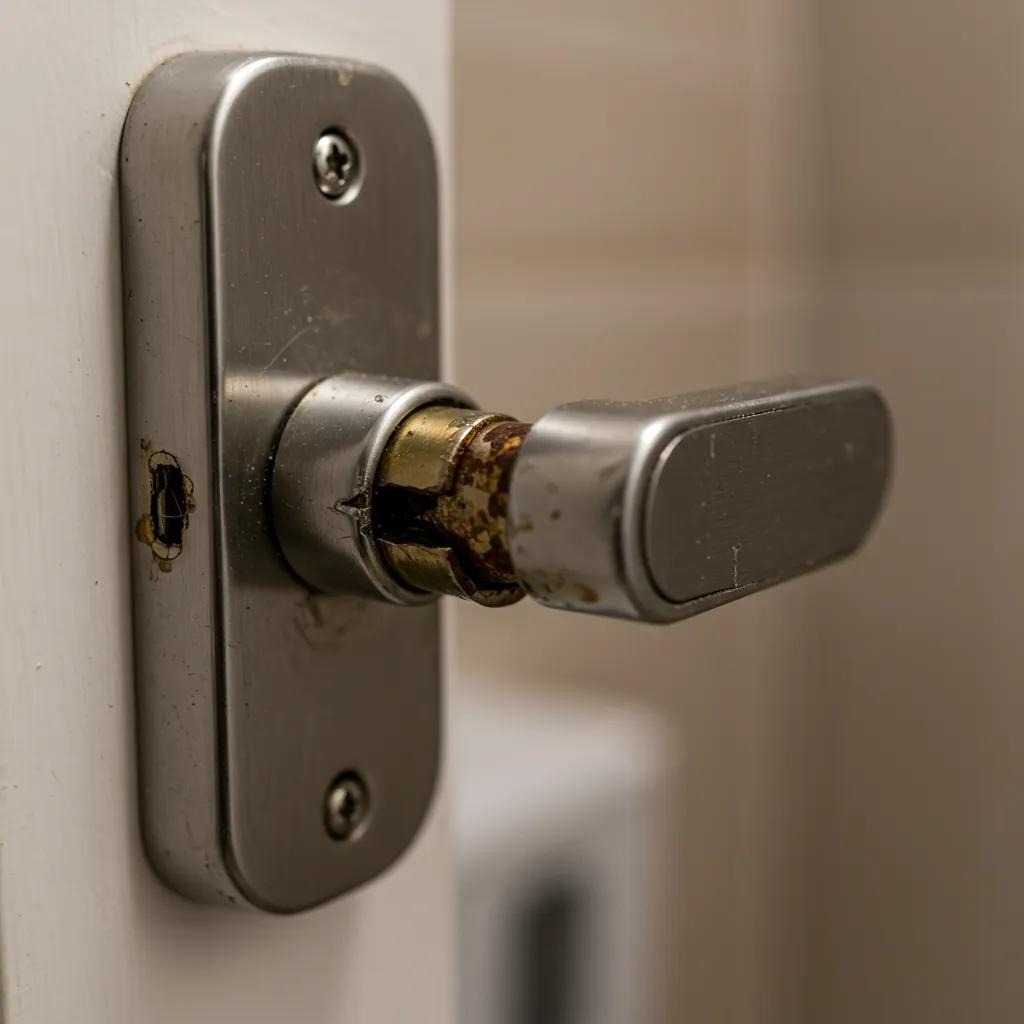
A bathroom door lock that sticks, grinds, or fails to latch properly signals internal wear or damage requiring repair or replacement. Corroded components, loose mounting screws, and jiggling knobs that won’t retract the latch indicate mechanical failure. Simple repairs such as realigning the strike plate and tightening hardware may resolve minor issues, while severely worn tumblers or cracked casings warrant complete lock replacement. Lostkey Locksmith can diagnose these conditions, recommend cost-effective repair when feasible, or install a new privacy lock model for long-term reliability.
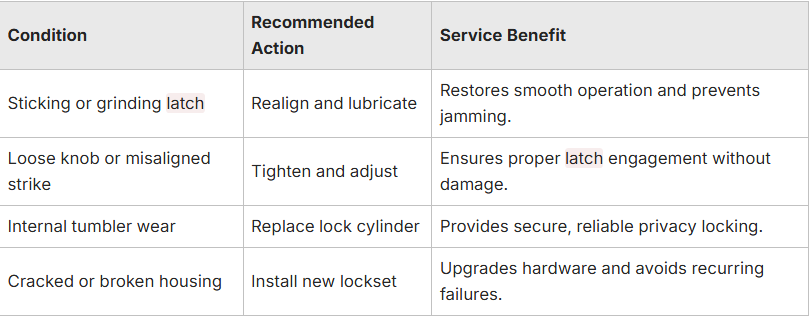
Identifying these repair signs early promotes timely intervention, minimises inconvenience, and supports long-term door security.
A locked bathroom door need not cause panic or unnecessary replacement. With clear knowledge of lock types, DIY unlocking methods, professional intervention criteria, and preventive maintenance, homeowners can handle most lockouts confidently. When complexities arise or speed is essential, Lostkey Locksmith offers expert non-destructive entry, rapid response, and professional guidance that ensures every bathroom door opens smoothly and reliably.
Read More

Lost Your Car Keys? Advanced Locksmith Solutions for Modern Vehicles
Gone are the days when a simple key blank could solve a car lockout. Modern vehicles, particularly those manufactured after 1995, are equipped with sophisticated immobiliser systems.
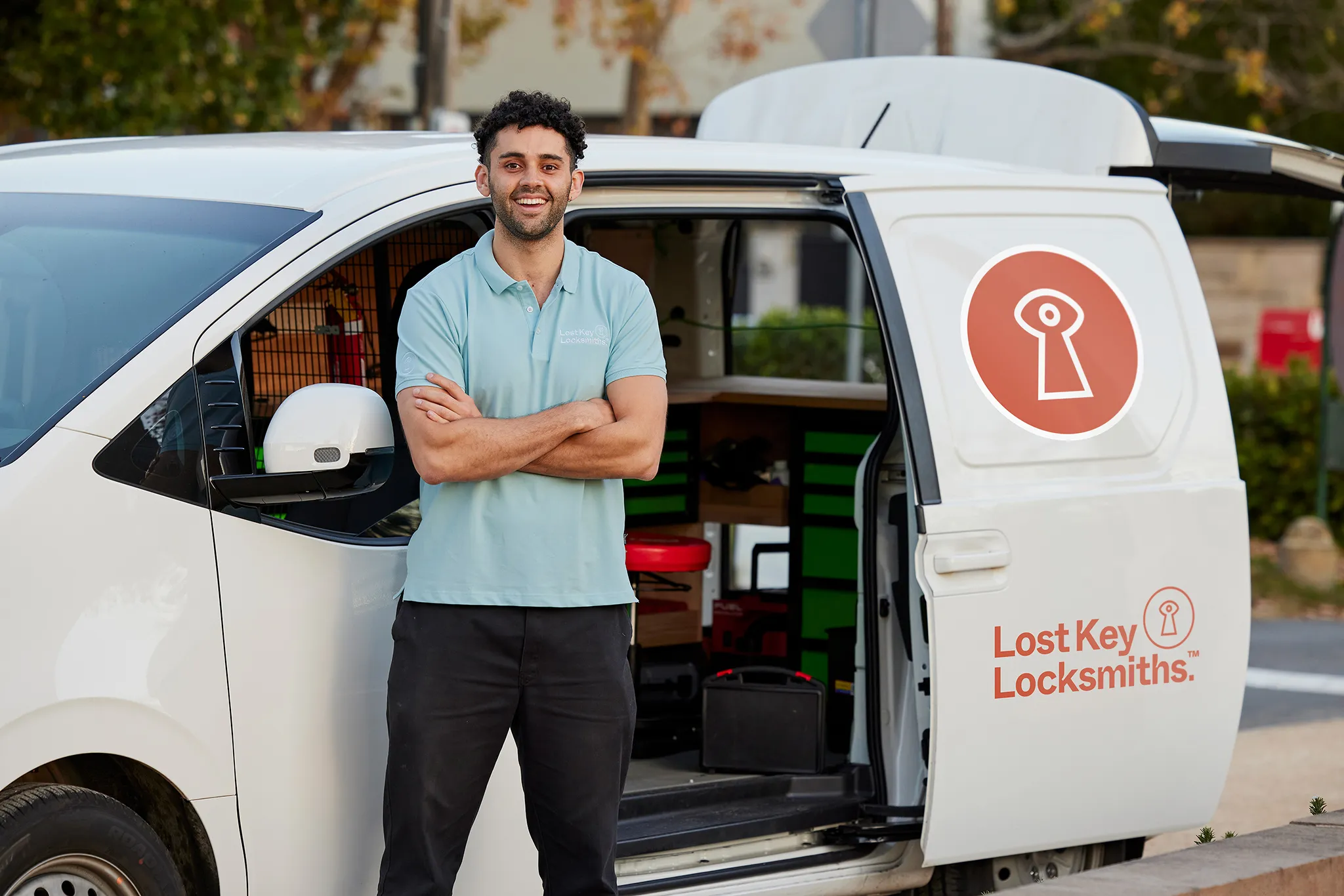
Emergency Locksmiths Sydney
Standing outside your locked home at two in the morning, or staring at your car keys through the window while your engine runs, or worse, coming home to discover someone has forced your door open, these are the moments when you need help immediately and the quality of that help really matters.
.jpeg)
Stranded and Stressed: What to Do During a Car Lockout
It's happened to the best of us. You race out the door, only to find the car securely locked and your keys… nowhere to be found. Panic sets in. You're locked out, stranded, and potentially facing a major inconvenience.





